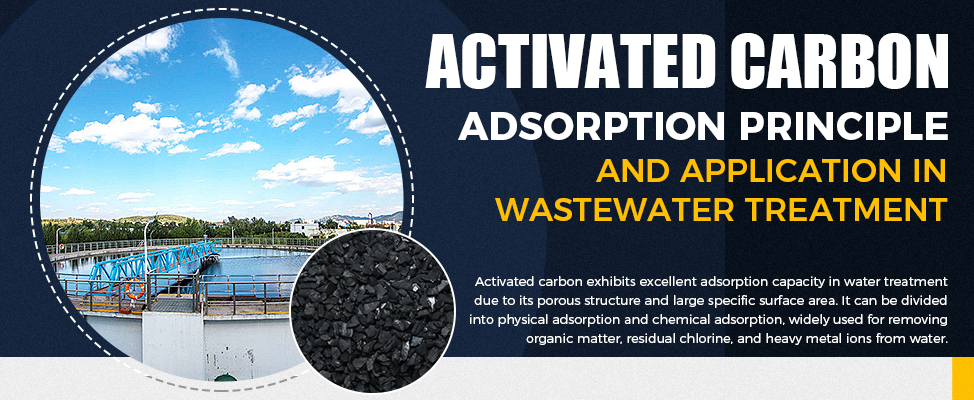
Activated carbon is a carbonaceous material with a highly porous structure, offering a large surface area and exceptional adsorption capacity.
It is typically produced from raw materials such as coal, coconut shells, or wood through high-temperature activation. Due to its unique porous structure and surface chemistry, activated carbon is widely used in both industrial and municipal wastewater treatment.
Activated carbon is a highly porous carbon material with an extensive surface area and pore structure, making it highly effective at adsorbing pollutants from water. The adsorption mechanisms include:
–Physical Adsorption: Van der Waals forces trap organic compounds, dyes, and odorous molecules.
–Chemical Adsorption: Surface functional groups (e.g., carboxyl, hydroxyl) react with contaminants, such as heavy metal ions.
–Catalytic Action: Some activated carbons promote redox reactions, breaking down persistent organic pollutants.
Key Factors: High surface area, pore structure (micropores <2nm, mesopores 2-50nm, macropores >50nm), and surface chemistry determine adsorption efficiency.
Activated carbon is widely used in industrial and domestic wastewater treatment, including:
–Organic Pollutant Removal: Phenols, dyes, pesticides, etc.
–Heavy Metal Adsorption: Lead (Pb²⁺), mercury (Hg²⁺), cadmium (Cd²⁺).
–Decolorization & Deodorization: Improves water clarity and smell.
–Advanced Treatment: Polishing step after reverse osmosis (RO) or biological treatment.
Common Uses:
-Industrial Wastewater: Textile, pharmaceutical, and petrochemical industries.
-Drinking Water Purification: Removes chlorine, organic contaminants, and improves taste.
–Pore Structure: Micropores adsorb small molecules, mesopores capture larger organics.
–Surface Chemistry: Oxygen-containing groups enhance adsorption of polar compounds.
–pH Level: Affects heavy metal ion speciation and carbon surface charge.
–Pollutant Concentration: High levels may shorten carbon lifespan.
–Contact Time: Longer exposure improves adsorption.
Optimization Tips:
-Choose the right type (Powdered Activated Carbon/PAC or Granular Activated Carbon/GAC).
-Regenerate or replace saturated carbon to maintain performance.
Activated carbon is a powerful solution for wastewater treatment due to its superior adsorption capabilities.
Selecting the right type and optimizing operational conditions can significantly enhance performance.

Please contact us for free quotation by form below. We promise the quickest response within 24 hours: